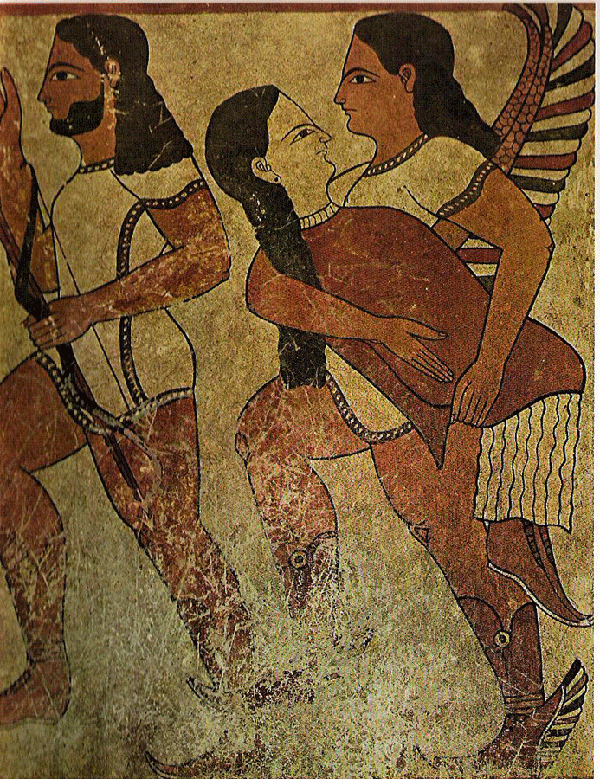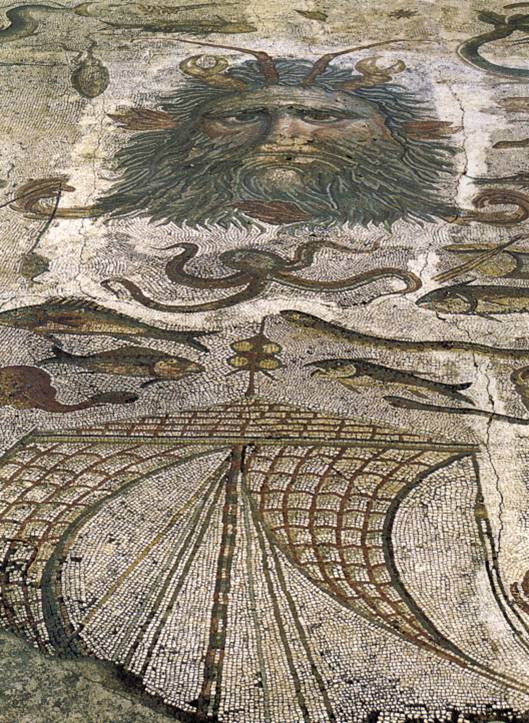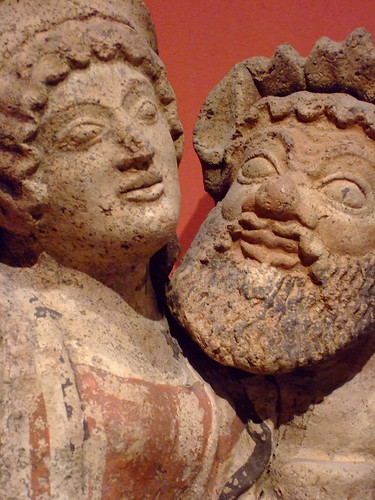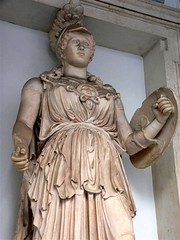
"Few historical problems have produced more unprofitable discussion than that of Hannibal's pass over the Alps," said the mid-20th-century historian F. W. Walbank, whom Patrick Hunt, a lecturer in the Classics Department, quotes in acknowledging the difficulty and exhilaration of researching the subject. Hunt, director of the Stanford Alpine Archaeology Project, estimates that 20 major studies and articles have focused on it in the past century alone.
He has been investigating the question for the past decade. Now, he hopes he may have found the answer.
"It may be hubristic and definitely ambitious of me to think I might be able to prove that route," he conceded. His most notable predecessor was Napoleon Bonaparte, who reputedly carved his name under Hannibal's on rocks he found in the Alps.
But Hunt has new scientific tools to assist his investigation, and with them have come a profusion of evidence. As the first geoarchaeologist to tackle the question, Hunt has employed methods as diverse as analyzing rock weathering rates, scrutinizing lichen growth, studying pollen records and modeling historical glaciation on computers to help him envision how the land today might be different from that described in ancient texts. Ultimately, the tools will help him comprehend how feasible it was that certain paths were taken by Hannibal and his army traversing the mighty Alps.
"Putting all this together is like detective work," Hunt says. "For me, it's as much science as ancient history."
Before analyzing the Alps, however, Hunt hiked. Over the past 10 years he has traversed 25 passes. He has broken 30 bones along the way. During the summer, he brings groups of a dozen students along with him. "I'm the only one in the picture," he said, pointing to a photograph of himself backed by towering peaks, "because everybody else is way ahead of me."
Years of getting to know the mountains and comparing them to ancient texts—primarily those of Polybius and Livy, contemporary and post-contemporary historians of Hannibal—has led Hunt to conclude that Hannibal's pass was the Col de Clapier. Situated in the western central Alps at 8,000 feet above sea level, this relatively high route is the only one that has made it past Hunt's decade of scrutiny.
The pass must fulfill 11 criteria, as delineated by the ancient books, Hunt explains.
To begin, distances, landmarks and encounters with barbarian tribes in the ancient texts give indicators of where Hannibal's army could have begun and ended its trek. The army must have encountered the Allobroges tribe, for instance, whose territory was found only to the north. The endpoint must be a three-day's march from the city of Turin in Italy, so the path could not stray too far south. Furthermore, the summit, where the army reportedly camped for two days, must be large enough to hold at least 25,000 men and a few dozen elephants, as well as many pack animals. It also has to be high enough, and thus cold enough, for the previous winter's snow to have remained. The ascent must be gradual, but the descent deadly. Moreover, a "white rock place" must be found exactly one day's march from the top where the army sheltered itself against the last of the seemingly endless innumerable attacks by hostile tribes hampering their passage.
"Calculate the compounded probabilities of any one pass fulfilling all these criteria," Hunt says. "It's pretty slim."
The Col de Clapier fulfills all of these obligations, rising 1,000 feet higher than most of the other Alpine passes and exhibiting all the landmarks that the army reportedly saw. Cows graze on the sprawling plain at the summit, and a magnificent view of Italy reveals itself where the soldiers purportedly stood when Hannibal, by Polybius' account, "directed his men's gaze toward the plains of the Po … and in this way he did something to restore their confidence."
Hunt's theory is compelling but not without challengers. The favorite alternative was championed by historian John Prevas a few years ago as the Col de la Traversette. At almost 10,000 feet, the pass is one of the highest in the Alps and would certainly be cold enough to retain a former winter's snows.
But ironically, Hunt thinks it would be too high, and the terrain too treacherous. "This pass has the most dramatic view," he said. "But it's killer. In fact, I almost died on it last year." He describes both the ascent and descent near the summit as "very difficult," which runs counter to Polybius' descriptions of an easier ascent than descent. Glaciers might have made it more feasible, he admits, but he thinks their presence 2,000 years ago was unlikely because it was a warmer period than today. Other problems also weigh against the Traversette, he says—for example, its distance from Turin and its avoidance of a more obvious, direct neighboring route across the Montgenevre Pass.
Hunt's scientific tools have become of great use in his most recent analyses. Pollen records hint that the tree line may have been higher in Hannibal's time, indicating a warmer climate that would make it less likely that year-round snow would have been lower than at the Col de Clapier. Closely studying the geology at the Traversette further lends evidence that the pass may not even have been passable in Hannibal's time, Hunt says.
The next leg of his investigation is to look for hard evidence in the form of artifacts. "You have to assume that an army of 25,000 people plus elephants is going to leave a record of its passage," Hunt said. "But to date, not one Carthaginian coin has been found in the Alps proper."
And so he proposes new methods. "I think the topography has sufficiently changed over several millennia so that if the evidence is there, it's not going to be on the surface. I would look not on the direct route, but down the precipices," he said. Also, he said, efforts should be focused where the geology is stable, where rapid erosion would not have buried remains deeply.
Hunt and his team have identified 19 sites to excavate and are awaiting from the European governments the permits that are required before any evidence can be removed from the land. Hoping to be at the cusp of a breakthrough, Hunt and his research have attracted attention and funding from Helen and Peter Bing and the National Geographic Society."
Note: The image above is
Hannibal, portrayed by Ben Maccabee in the History Channel special, The True Story of Hannibal, produced in 2004. I thought it was an excellent presentation.


















 Carabinieri police officers inspect the ruins of an ancient Greek temple in Torre Melissa, Italy, where a developer was about to build.
Carabinieri police officers inspect the ruins of an ancient Greek temple in Torre Melissa, Italy, where a developer was about to build.








